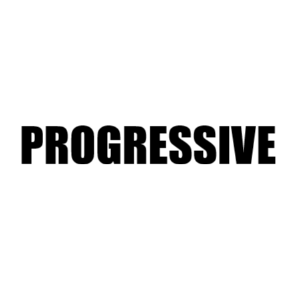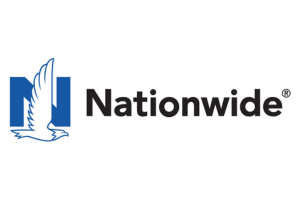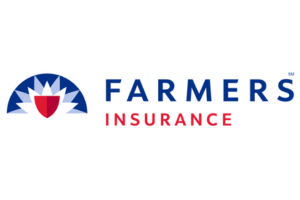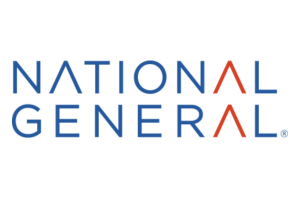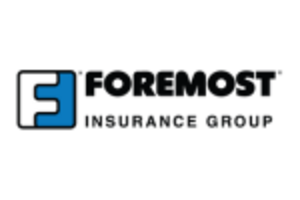Best New York SR-22 Insurance in 2025
What are New York's SR-22 requirements?
New York is among the few states that doesn’t require drivers to file an SR-22 form. While New York requires all drivers to have a minimum amount of liability insurance coverage, it doesn’t require drivers to get SR22 insurance after certain driving violations like most states do. New York has other laws in place that determine penalties for certain violations.
For states that require an SR-22 form, it means the driver committed a driving violation and has been required by their state or court to file it. The SR-22 insurance form is a proof of insurance and it guarantees to the state that you have the minimum amount of insurance coverage required of you and it allows you to drive in the state. SR-22 forms are typically required after a driver has been convicted of a DUI, was caught driving without insurance or committed another serious violation. Usually, your insurance provider will take care of the SR-22 filing for you. Insurance is more expensive for drivers with an SR-22 requirement, but the cost varies with different SR-22 auto insurance companies.
SR-22 insurance limits in New York
Although New York doesn’t require drivers to have SR-22 insurance after certain convictions, the state still requires all drivers to have certain auto insurance coverage. These are the minimum requirements for liability insurance for all drivers in New York:
- $25,000 for bodily injury or death per person
- $50,000 for bodily injury or death per accident
- $10,000 for property damage coverage per accident
When you get car insurance, your insurance company is required to notify the NY DMV every time you purchase liability coverage and every time your coverage ends whether your policy is canceled or you switch companies. If you don’t have the required amount of car insurance or the DMV doesn’t receive proper notice of your coverage, your license and vehicle registration could be suspended.
Who needs an SR22 in New York?
Even though New York does not require its drivers to have SR-22 insurance after certain convictions, if you’re a driver in New York and you’re moving to a state that requires SR-22 insurance, you may need to have SR-22 insurance in your new state. SR-22 insurance is required in a few scenarios in order for you to get your license reinstated. SR-22s are required after you’ve committed certain violations with the law. You may even be required to have an SR-22 if you’ve had a series of small traffic offenses within a short span of time. You could need SR-22 insurance for the following reasons:
- Conviction for driving under the influence (DUI or DWI)
- Driving without car insurance
- Driving with a revoked or suspended license
- Having repeated traffic violations in a certain amount of time, including speeding tickets
- Numerous at-fault accidents
- A fatal at-fault accident or one that results in injuries
- Reckless or dangerous driving
- Assignment from a court order
- Failure to pay fines from tickets
- Refused consent to breathalyzer or blood alcohol test
If you’re moving to a new state and need to get SR-22 insurance, you’ll need to get SR-22 insurance from an insurance company that offers SR-22 insurance in your new state. The form will need to be filed with your new state rather than with New York.
How much are New York's SR-22 insurance rates?
In most states, one of the most common reasons drivers need SR-22 insurance is that they were convicted of a DWI/DUI. Even though drivers who’ve been convicted of a DUI won’t be required to file an SR-22 form in New York, auto insurance rates are still significantly affected. New York drivers who’ve been convicted of a DUI pay an average of $2,779 per year for car insurance, which is 66 percent higher than standard car insurance in New York. In the table below, you can view the average cost of insurance for drivers in New York who’ve been convicted of a DUI.
| Company | Car insurance rate |
|---|---|
| Progressive | $1,839 |
| Erie | $2,236 |
| Travelers | $2,329 |
| Allstate | $2,461 |
| USAA* | $2,786 |
| Geico | $2,967 |
| State Farm | $3,777 |
| Liberty Mutual | $6,447 |
*USAA is only available to active and former military members and their families.
These rates are based on a 35-year-old single adult with one driver and one vehicle on a policy. The car used was a 2015 Toyota Highlander LEs. Full coverage was used with 100/300/50 limits and a $500 collision and comprehensive deductible. The driver had 1 DUI on their record. The rates displayed should only be used for comparative purposes as individual rates for high-risk insurance in New York will differ. Rate data is provided by Quadrant Information Services.
While car insurance policies with a DUI are expensive, if you maintain your car insurance while keeping a clean driving record, your rates may go down over time.
How do you get SR-22 insurance in New York?
If you’ve been convicted of a driving violation in New York, you may be considered a high-risk or non-standard driver. This may result in your car insurance rates to increase.
Even though New York doesn’t require an SR-22 form, drivers with violations typically associated with SR-22 insurance may have a harder time finding a company that will sell them an auto insurance policy. This is especially true if you've had a license suspension or lapse in coverage. If you’re considered a high-risk driver, it may be a good idea to shop for a new car insurance company in New York.
Use the table at the top of this page to find all the car insurance companies that offer high-risk insurance in New York. If you want to see which companies customers say are the best car insurance companies for high-risk insurance in New York, sort the table by highest rated. You can sort through companies and find the ones you want to get quotes from. To get quotes, click on the orange “Click for quote” button next to the company, call the number available or visit the company’s website.
If you want to read customer reviews of the company, click the company name in the table and you will be directed to the company’s profile page containing information about the company and reviews.
How much are SR-22 fees in New York?
Because SR-22 insurance is not required in New York, there are no fees associated with the form. However, even though drivers don’t have to file the form in New York, they still have to pay fees and face penalties for committing violations. If you are driving without insurance in New York, your driver’s license and vehicle registration could be suspended, requiring fees to end the suspension.
The consequences of a DWI in New York involve heavy fines and many requirements in order to earn your driving privileges back. Fines for a DWI in New York is $500 to $1,000. Additionally, drivers convicted of a DWI could face up to a year in jail and a revoked license for a minimum of six months. Subsequent DWI offenses and more serious offenses have even stricter penalties with fines up to $5,000 or even $10,000 for some convictions.
If your license is suspended in New York, you’ll need to pay a suspension termination fee of $50 in order to restore . If it was suspended because you broke New York’s zero tolerance alcohol law, the fee is $100.
How are car insurance rates calculated?
When searching and comparing car insurance quotes, it can be frustrating trying to understand how your insurance rates are calculated. While there is no exact formula that each car insurance company uses when providing you a quote, there are many factors that do contribute to the price you pay for your insurance. Among the factors that car insurers consider are:
- Your driving record
- How much you drive
- ZIP code
- Age
- Marital status
- Gender
- Your car’s make, model and year
- Your credit history (in some states)
- Amount of car insurance coverage (required coverage and optional add-ons, such as comprehensive and collision coverage)
One of the biggest misunderstandings when it comes to insurance rates is that the history of drivers in your area also contributes to how much you pay. For instance, even if you go two years without an accident, if there were a lot of accidents near you recently, your rates might still go up. Why is that the case?
Insurance companies disperse risk across all policyholders so that when it comes time to pay a claim, they have enough money to pay out. But imagine a scenario where they only raised rates for drivers with an accident. For drivers who had an expensive claim, the drivers simply wouldn't be able to afford the raised rates that are based off how much their insurer had to pay after an accident. So instead, insurance companies slightly increase rates across the board to offset the costs, though of course the at-fault driver may see a larger increase.
How much car insurance do I need?
You certainly don’t want to be underinsured or uninsured while staring at a claim after a car accident or other damage to your car. But at the same time, there’s no sense in paying for more coverage than you need, right? So it begs the question: How much car insurance coverage do you actually need?
The answer, as frustrating as it may be, is it depends. For example, someone insuring a brand-new, leased car is likely required to purchase collision and comprehensive coverage, but for someone driving an older car that doesn’t have much value, it may not make sense to purchase optional coverage. Plus, states have different car insurance requirements. There are 12 no-fault states that require its drivers to purchase personal injury protection (PIP).
So when it comes to determining what car insurance coverage and limits you should purchase, it’s important to do your research. Talk with an insurance agent or your insurance company to determine what makes the most sense for your situation.
How can you save money on your car insurance?
At the end of the day, we’d all like to have the best coverage at a cheap, affordable price. While you never want to sacrifice quality to save a couple of dollars, there are some different ways you can lower your car insurance premium.
Here are six ways you may be able to lower your car insurance rates:
- Bundle your car insurance with other policies
- Consider raising your deductibles
- Pay your car insurance policy in full
- Try usage-based car insurance
- Monitor price changes to your policy
- Shop for better insurance rates
A usage-based insurance program uses a telematics device or mobile app on your phone to monitor your driving habits. When you drive safely, you are rewarded with a discount on your auto insurance coverage.
Other common discounts include the safe driver discount, multi-policy discount (for bundling), good student discount, and multi-vehicle discount.
Many auto insurers also offer a discount for certain safety features on your vehicle, like anti-lock brakes and daytime running lights.
Experts recommend you get at least three auto insurance quotes before you choose a policy. Make sure to take the discounts each company offers into consideration when you're looking at quotes.
If you're dissatisfied with the cost of SR-22 car insurance with your current insurance company, there is likely a better deal available elsewhere. Do some research on other companies' auto insurance rates until you find something that works with your budget.
How does Clearsurance rank car insurance companies?
Wondering how Clearsurance determines scores for insurance companies? Our algorithm analyzes a range of inputs from our community of unbiased insurance customers, including:
- Cost
- Customer Service
- Overall Experience
- Claim service
- Purchasing experience
- Likelihood to recommend
Do you need help understanding car insurance?
Whether you’re buying your insurance direct or going through an agent, understanding the different car insurance coverage options is a must. Do you know what is covered by comprehensive coverage? Are you familiar with uninsured motorist coverage? Do you know how a deductible works?
We want to make sure you’re equipped with a proper knowledge of car insurance, so check out our practical guide to understanding car insurance. Looking for more educational information about car insurance? Check out our blog for more information and topics related to car insurance.


